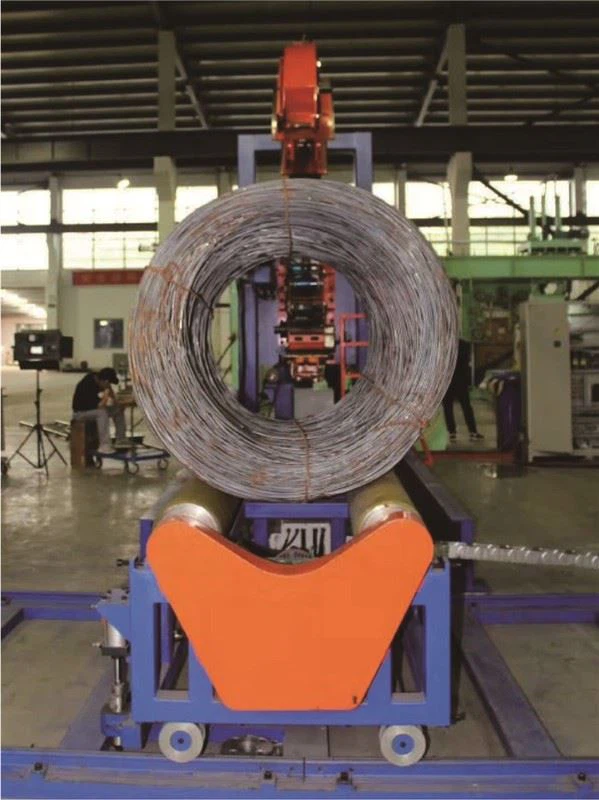As a steel producer in Spain, you operate in a demanding market. You face the constant pressure of volatile energy prices, the challenge of maintaining aging equipment, and the need to meet strict environmental standards. Every day, you work to balance production capacity with fluctuating market demands from the construction and automotive sectors. This pressure can feel overwhelming. It eats into your profit margins and makes planning for the future difficult. The real problem is that outdated equipment and processes at the end of your production line can silently sabotage all the hard work done upstream. A modern, efficient coil wrapping solution isn't just a purchase; it's a strategic investment in your plant's overall health and profitability.
To boost production efficiency, steel producers in the Spanish market should implement automated coil wrapping solutions that integrate with existing systems. These solutions reduce manual labor, minimize packaging material waste, and provide superior protection for steel coils against corrosion and transit damage. By automating the end-of-line process and connecting it to your factory's data network, you can increase throughput, reduce costly downtime, and gain the real-time insights needed to make smarter operational decisions. This directly addresses key challenges and helps you achieve higher utilization and lower costs.
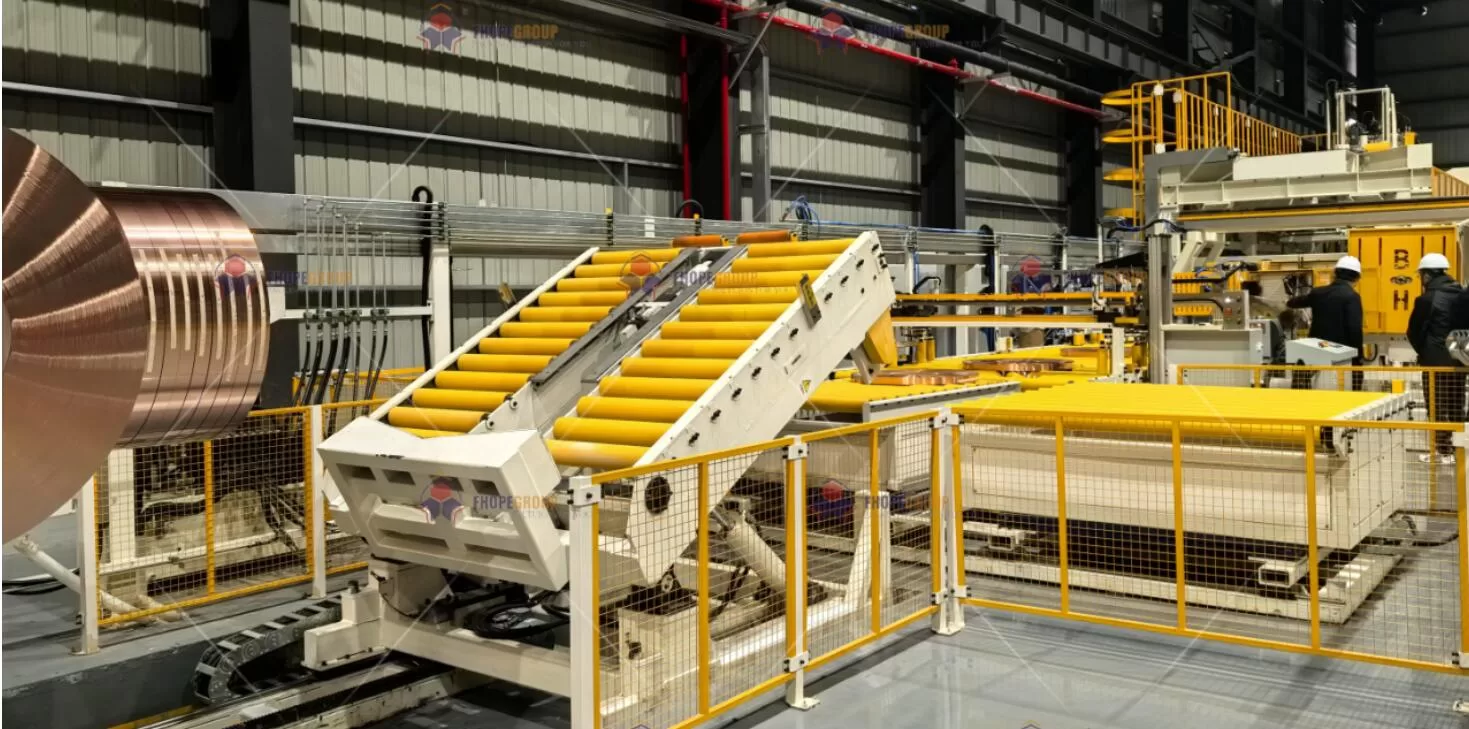
I've walked in your shoes. I started as an engineer on the factory floor and eventually built my own packing machine company. I understand that every piece of equipment must justify its existence through performance and return on investment. A wrapping machine might seem like a small part of a massive steel operation, but I've seen firsthand how optimizing this final step can unlock significant gains in efficiency and cost savings. Let’s explore how the right wrapping solution can make a real difference for your facility.
How Can Modern Coil Wrapping Lines Combat Rising Energy Costs?
You see it every month on your utility bills. The rising cost of electricity and fuel directly impacts your production costs and squeezes your margins. It’s a constant battle. You’ve likely already optimized the big energy consumers, like your furnaces and rolling mills. But you might be overlooking the smaller, yet persistent, energy drains across your plant. An older coil wrapping line, with its inefficient motors and non-stop operation, can be one of these hidden costs, consuming far more power than necessary. This continuous waste of energy is like a leak in your budget; small but constant, it adds up to a significant loss over time. The solution is to target these areas with modern technology designed specifically for energy efficiency.
Modern coil wrapping lines combat rising energy costs by using high-efficiency servo motors instead of older, power-hungry AC motors. They also implement smart "start-stop" technology that automatically powers down the system during idle periods between coils. Furthermore, advanced control systems optimize the wrapping process itself, applying packaging material with precision. This means the machine uses the minimum energy required for each cycle, directly reducing your plant's overall electricity consumption and lowering your operational expenditures.
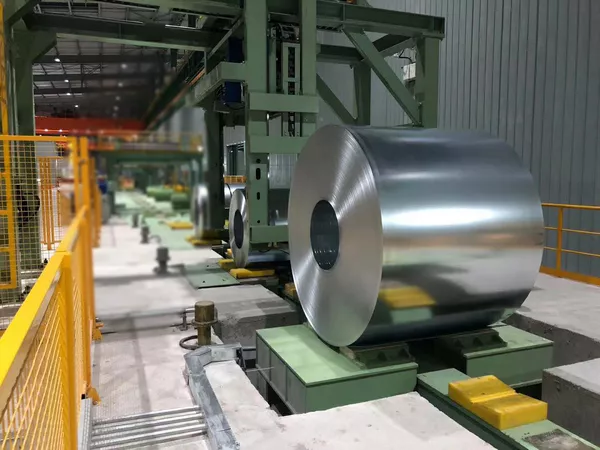
From Energy Drain to Energy Gain
When I visit steel plants, I often see wrapping equipment that is over 15 or 20 years old. These machines were built in an era when energy was cheaper and efficiency was not a primary design concern. They typically run on oversized AC induction motors that consume a constant amount of power, whether they are wrapping a coil or sitting idle. This is a major source of wasted energy.
The technology has changed dramatically. Let's break down the key differences that contribute to energy savings.
Advanced Motor Technology
The heart of the energy-saving revolution is the shift from standard AC motors to high-efficiency servo motors and the use of Variable Frequency Drives (VFDs).
- Servo Motors: These motors are incredibly precise and efficient. They only draw significant power when they are actively moving and accelerating. During the rest of the cycle, their energy consumption is minimal. This is a stark contrast to old motors that run at full tilt all the time.
- Variable Frequency Drives (VFDs): A VFD adjusts the speed and torque of a motor by varying the input frequency and voltage. This means the motor only uses the exact amount of energy needed for the task at hand. For example, the ring that carries the wrapping material can be accelerated smoothly and run at an optimal speed, rather than a fixed, inefficient one. This alone can cut motor energy use by 20-50%.
I remember a client in Valencia whose management was skeptical about the claimed energy savings. We installed power meters on their old wrapping line for a week and then on the new SHJLPACK line we installed. The results were clear. Their energy consumption for the packing line dropped by nearly 30%. They initially thought major savings were only possible in the furnaces, but this proved that every stage of production offers an opportunity for improvement.
The table below gives a simple comparison:
| Feature | Old Wrapping Machine (pre-2005) | Modern SHJLPACK Machine (2024) |
|---|---|---|
| Main Motor Type | Standard AC Induction Motor | High-Efficiency Servo Motor with VFD |
| Idle State | Runs continuously or in standby mode | "Sleep Mode" or complete stop |
| Power Consumption | High and constant | Variable, based on workload |
| Mechanical System | Complex gearboxes, chains | Direct drives, fewer mechanical losses |
| Control System | Basic relays and timers | PLC with optimized wrapping cycles |
| Estimated Energy Savings | Baseline | 25-40% reduction |
These savings are not just theoretical. They translate directly into lower monthly bills and a healthier bottom line, helping you combat the unpredictable nature of energy prices in the Spanish market.
What's the True ROI of Upgrading Aging Coil Packing Equipment?
Your maintenance team is constantly working on the old packing line. It breaks down at the worst possible times, causing production delays. Finding spare parts for a 15-year-old machine is a challenge, often leading to extended downtime. You know the machine is a problem, but the capital expenditure for a new one seems high. The issue is that the "cost" of that old machine is not its book value. The real cost is hidden in unplanned downtime, lost production hours, delayed shipments, and the potential for damaged products that lead to customer claims. Each minute the line is down, money is lost. This continuous firefighting mode prevents your team from focusing on proactive improvements. A strategic investment in a new, reliable coil packing line can solve these problems and deliver a clear, fast return on investment (ROI).
The true ROI of upgrading aging coil packing equipment is calculated by looking beyond the initial purchase price. It includes the significant savings from drastically increased uptime, reduced manual labor requirements, lower consumption of wrapping materials, and the near-elimination of product damage during handling and transit. For many steel producers, these combined savings lead to a full payback on their investment in as little as 18 to 36 months, transforming the new machine from a cost center into a profit generator.
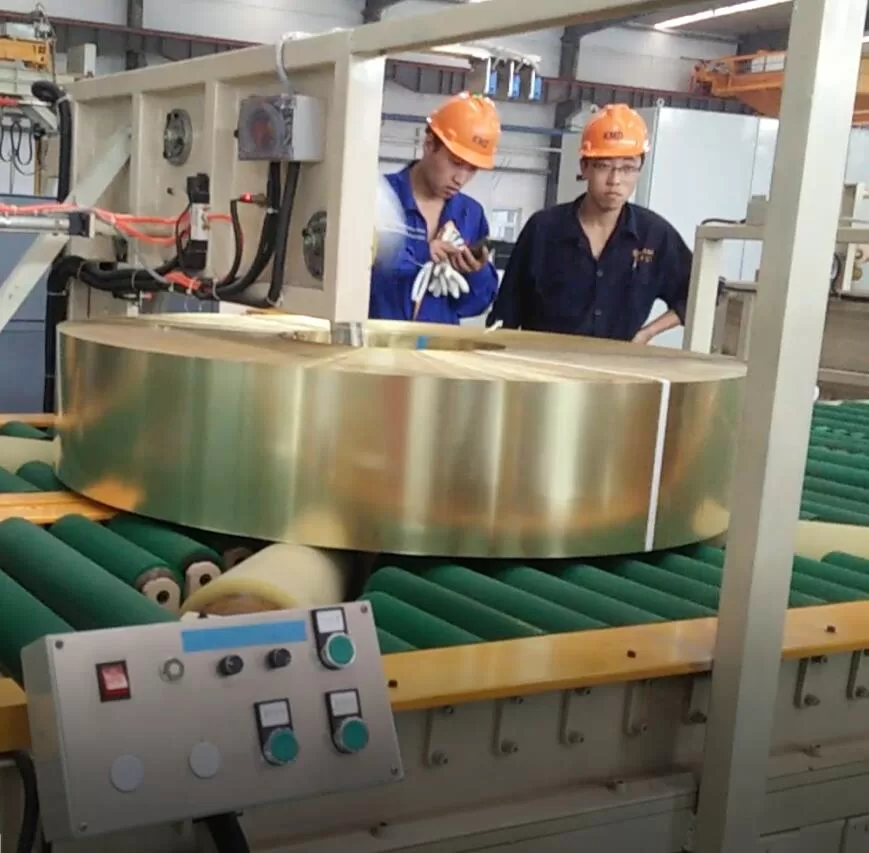
Calculating Beyond the Price Tag
When I started my own factory, I had to be extremely careful with every euro. I learned very quickly that the cheapest machine is often the most expensive one to own in the long run. An owner as experienced as Javier Morales understands this concept well. A rigorous ROI analysis is not just about comparing quotes; it is about understanding the total value an investment brings to the operation.
Let's break down the key components of the ROI for a new coil wrapping line.
OEE (Overall Equipment Effectiveness)
OEE is a critical metric for any manufacturing plant. It measures the percentage of planned production time that is truly productive. It is calculated as: OEE = Availability x Performance x Quality. An old machine hurts all three factors.
- Availability: An old machine has low availability due to frequent breakdowns and long repair times. A new machine, with reliable components and predictive maintenance features, can easily push availability above 98%.
- Performance: An old machine runs slower. A new automated line can wrap a coil in a fraction of the time, increasing throughput.
- Quality: Inconsistent wrapping on an old machine can lead to damaged coils (from rust or handling) that must be re-processed or scrapped. A new machine provides consistent, high-quality wrapping every time.
Improving OEE from 70% on an old line to 95% on a new one means a massive increase in productive output without changing anything else in your plant.
Quantifiable Savings
Here is a simple table showing where the savings come from. Let's imagine a typical scenario for a Spanish steel mill.
| Savings Category | Old Semi-Automatic Line | New Fully Automatic SHJLPACK Line | Annual Savings Example |
|---|---|---|---|
| Labor Costs | 2 operators per shift | 0.5 operators (supervision only) | €70,000 |
| Uptime (Availability) | 85% availability | 98% availability | €150,000 (value of lost production) |
| Material Waste | 10% material overuse | <2% waste with precise control | €20,000 |
| Product Damage Claims | 1% of shipped value | <0.1% of shipped value | €50,000 |
| Maintenance Costs | High (parts & labor) | Low (warranty & reliable parts) | €15,000 |
| Total Annual Savings | €305,000 |
If the new automatic line costs, for example, €500,000, the payback period is just over 1.6 years (€500,000 / €305,000). This is the kind of hard data that justifies the investment. The "cost" of doing nothing is continuing to lose over €300,000 every year. That is the true price of aging equipment.
How Does Integrated Automation in Wrapping Lines Support Digital Transformation Goals?
You have a vision for a "smart factory." You want to achieve goals like 95% capacity utilization and a fully transparent production process. You're investing in Manufacturing Execution Systems (MES) and planning to use data for predictive maintenance. But there's a problem: your packing line is an island. It’s a "black box" at the end of your process that provides no data. You don't know its real-time status, how many coils it has wrapped, or if a motor is close to failing. This lack of visibility makes true optimization impossible. You are forced to rely on manual tracking and guesswork, which gets in the way of your ambitious digital transformation goals. The solution lies in choosing equipment that is designed not just to perform a task, but to communicate.
Integrated automation in wrapping lines directly supports digital transformation by functioning as an intelligent node on your factory network. These modern lines are equipped with PLCs and sensors that connect seamlessly to your MES or ERP system. They provide a constant stream of real-time data on cycle times, material consumption, equipment status, and diagnostic alerts. This information enables predictive maintenance, allows for smarter production scheduling, and gives you the complete operational visibility required to turn your smart factory vision into a reality.
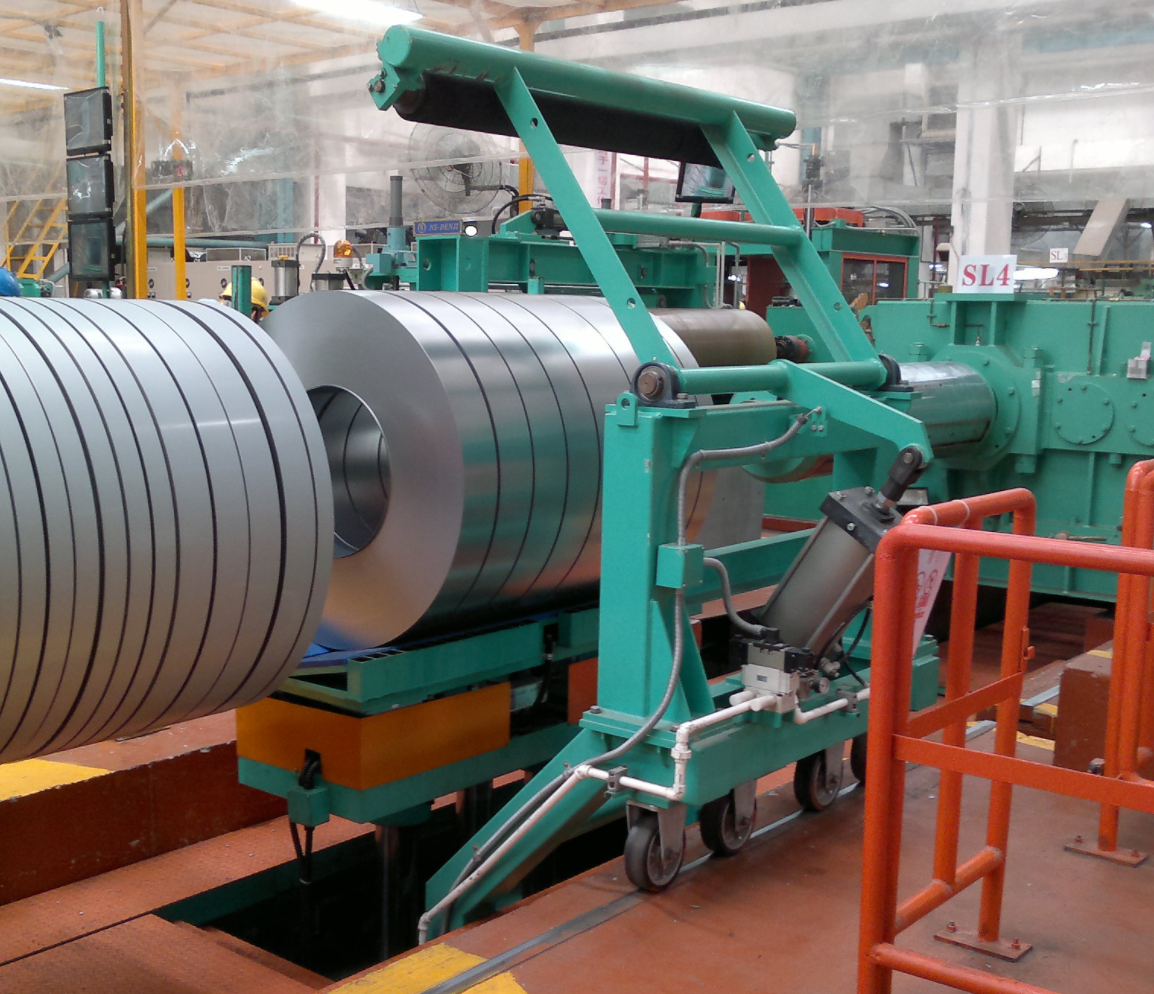
Your Packing Line as a Data Hub
Many people I talk to think digitalization is only for the big, complex machinery like rolling mills. They see the packing line as a simple, standalone unit. But I've learned that in a truly smart factory, every piece of equipment must be part of the conversation. An integrated packing line is not just an endpoint; it's a crucial data collection hub that provides valuable insights into the health of your entire downstream process.
Let's explore how this works in practice.
Seamless Integration with MES and ERP
A modern SHJLPACK wrapping line is controlled by a powerful Programmable Logic Controller (PLC), like a Siemens or Allen-Bradley unit. This PLC is the brain of the machine, but it's also its voice. It can communicate with your factory's central systems using standard industrial protocols like Profinet or Ethernet/IP.
Here’s what that communication enables:
- Automated Work Orders: Your MES can send the packing requirements for the next coil directly to the wrapping machine. This includes the coil ID, customer specifications, and required wrapping recipe. This eliminates manual data entry and potential human error.
- Real-Time Production Tracking: As soon as a coil is wrapped, the machine sends a completion signal back to the MES and ERP. Your inventory is updated instantly. Your sales team can see in real-time that the coil is ready for shipment.
- Labeling and Identification: The system can automatically print and apply a label with all the correct information, including barcodes or QR codes for easy tracking throughout the logistics chain.
Enabling Predictive Maintenance
One of the biggest goals of digitalization is to move from reactive maintenance (fixing things when they break) to predictive maintenance (fixing things before they break). This is key to achieving 95% uptime. Our machines are built with this in mind.
| Sensor Type | Data Collected | Actionable Insight |
|---|---|---|
| Vibration Sensors | Monitors bearings and motors | An increase in vibration indicates a bearing is wearing out. Maintenance can be scheduled before it fails. |
| Temperature Sensors | Tracks motor and cabinet heat | Overheating can signal an electrical issue or a motor under strain. |
| Motor Current Draw | Measures energy consumption | A spike in current can indicate a mechanical jam or friction, alerting operators to a problem. |
| Cycle Counters | Tracks number of wraps/coils | Used to schedule routine maintenance based on actual usage, not just time (e.g., "replace chain after 1 million cycles"). |
I worked with a client who kept experiencing downtime on their shipping bay. They couldn't figure out the bottleneck. After we integrated their new packing line, the data showed a small but consistent delay between a coil being wrapped and it being picked up by the overhead crane. The data proved the packing line was waiting for the crane. By analyzing the time stamps, they were able to re-sequence their crane movements. This small change, identified through data from the packing line, increased their total daily throughput by 5%. This is the power of connecting all the dots.
Why is a Strategic Partnership More Valuable Than Just a Machine Supplier?
You need to buy a new piece of equipment. You send out requests for quotes, and you get back several offers. Some suppliers just send you a price and a spec sheet. They are focused on making a single sale. But what happens after you sign the purchase order? If you have a technical question during installation, who do you call? When your team needs training, is anyone available? When you need a critical spare part three years from now, will that supplier still be there for you? Buying a critical machine from a simple supplier is a transaction. It leaves you vulnerable and on your own. For something as important as your production line, you don't just need a machine; you need a reliable partner.
A strategic partnership is more valuable than a machine supplier because it provides a total solution that extends far beyond the equipment itself. A true partner, like SHJLPACK, works with you from the initial consultation to long after the machine is running. We provide expert advice on layout and selection, manage the installation and commissioning, train your staff thoroughly, and offer ongoing technical support and spare parts for the life of the machine. This collaborative approach ensures you get the maximum value from your investment and that the equipment helps you achieve your long-term business goals.

The SHJLPACK Philosophy: We're in This Together
When I worked as an engineer in a factory, I saw how frustrated our clients became with transactional suppliers. They would sell a machine and then be difficult to reach for support. When I founded my own company, I promised myself I would build it on a different foundation. My goal has never been to just sell the most machines. My goal is to help my clients succeed. Your success is my success. This philosophy is at the core of everything we do at SHJLPACK. It's why I started the company as a knowledge-sharing platform first—to help people in the industry, whether they are my customers or not.
This commitment to partnership is especially important for our clients in the Spanish market. We understand the specific challenges you face, from the need for excellent corrosion protection due to coastal humidity to the high standards of the European automotive supply chain. A partnership approach allows us to tailor a solution perfectly to these needs.
Here is what our partnership process looks like:
Phase 1: Deep Consultation and Custom Design
We start by listening. We want to understand your exact coil sizes, production rates, factory layout, and business goals. We don't offer a one-size-fits-all machine. We design a solution that fits your operation perfectly.
Phase 2: Transparent Manufacturing and Testing
We build your machine at our state-of-the-art facility. But we believe you should be part of the process. We invite you to our factory for a Factory Acceptance Test (FAT). You can see your machine run with your own products before it ever leaves our floor. This ensures there are no surprises during installation.
Phase 3: On-Site Installation and Commissioning
Our experienced engineers come to your site. We don't just ship a crate to your door. We manage the installation, connect the machine to your systems, and ensure it is running smoothly and efficiently. We stay until your team is comfortable and the machine is meeting the agreed-upon performance targets.
Phase 4: Comprehensive Training and Lifelong Support
A machine is only as good as the team operating it. We provide thorough training for your operators and maintenance staff. And our relationship doesn't end there. We are your long-term partner for technical support, process advice, and readily available spare parts. When you call us five or ten years from now, we will be here to help you.
This is what it means to be a strategic partner. It’s a promise of shared success. It's the reason I am so passionate about this work—it's not just about building machines; it's about building lasting relationships and helping others in the industry that has given me so much.
Conclusion
Choosing the right coil wrapping solution is a key strategic decision. We provide the technology and partnership to boost your efficiency, lower your costs, and drive your profitability.
